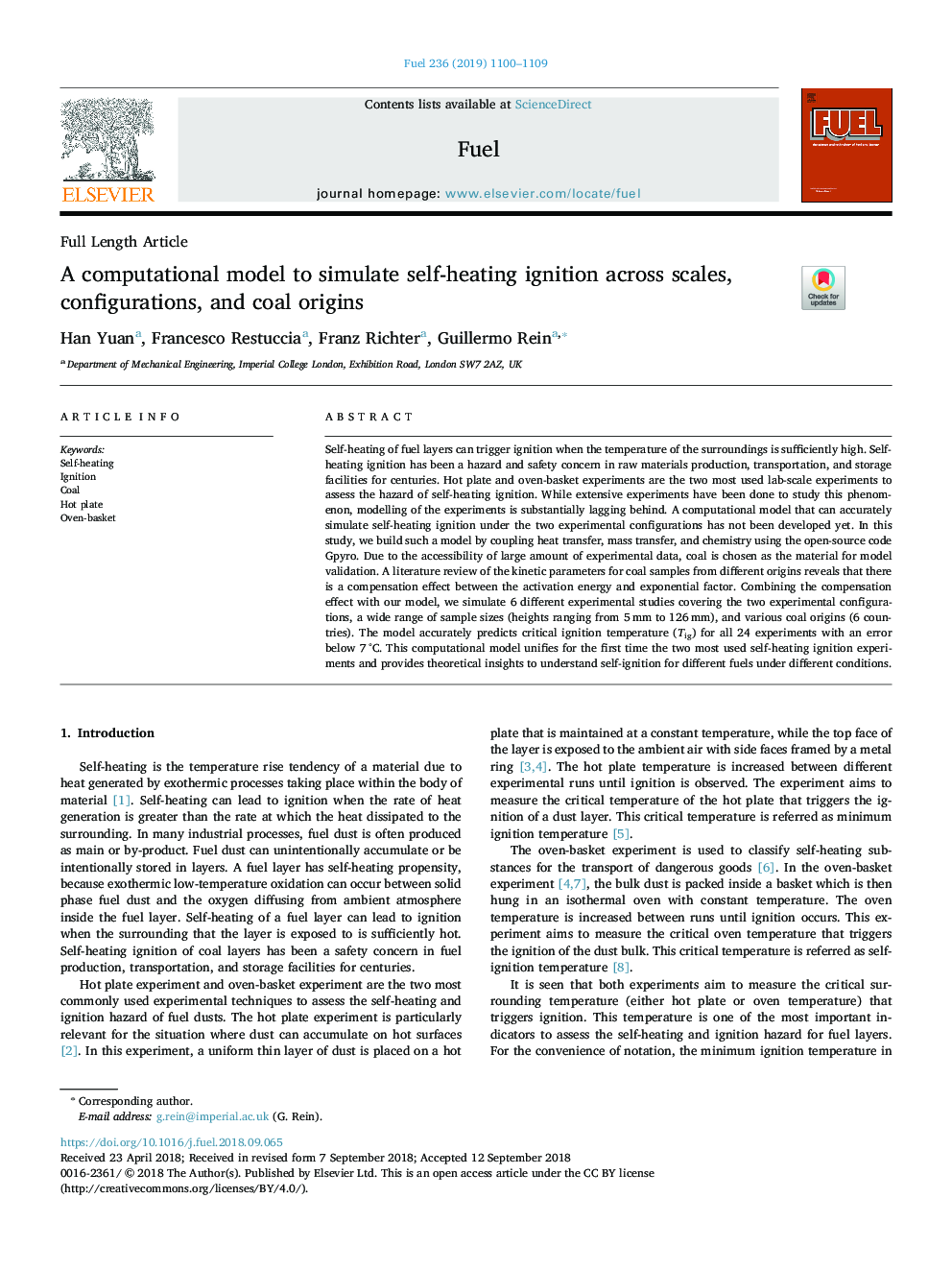| Article ID | Journal | Published Year | Pages | File Type |
|---|---|---|---|---|
| 11030259 | Fuel | 2019 | 10 Pages |
Abstract
Self-heating of fuel layers can trigger ignition when the temperature of the surroundings is sufficiently high. Self-heating ignition has been a hazard and safety concern in raw materials production, transportation, and storage facilities for centuries. Hot plate and oven-basket experiments are the two most used lab-scale experiments to assess the hazard of self-heating ignition. While extensive experiments have been done to study this phenomenon, modelling of the experiments is substantially lagging behind. A computational model that can accurately simulate self-heating ignition under the two experimental configurations has not been developed yet. In this study, we build such a model by coupling heat transfer, mass transfer, and chemistry using the open-source code Gpyro. Due to the accessibility of large amount of experimental data, coal is chosen as the material for model validation. A literature review of the kinetic parameters for coal samples from different origins reveals that there is a compensation effect between the activation energy and exponential factor. Combining the compensation effect with our model, we simulate 6 different experimental studies covering the two experimental configurations, a wide range of sample sizes (heights ranging from 5â¯mm to 126â¯mm), and various coal origins (6 countries). The model accurately predicts critical ignition temperature (Tig) for all 24 experiments with an error below 7â¯Â°C. This computational model unifies for the first time the two most used self-heating ignition experiments and provides theoretical insights to understand self-ignition for different fuels under different conditions.
Keywords
Related Topics
Physical Sciences and Engineering
Chemical Engineering
Chemical Engineering (General)
Authors
Han Yuan, Francesco Restuccia, Franz Richter, Guillermo Rein,
